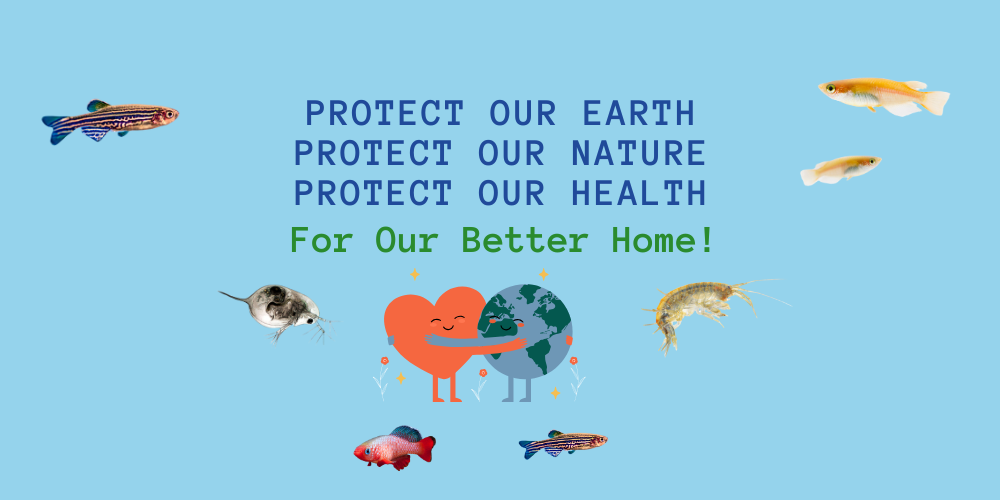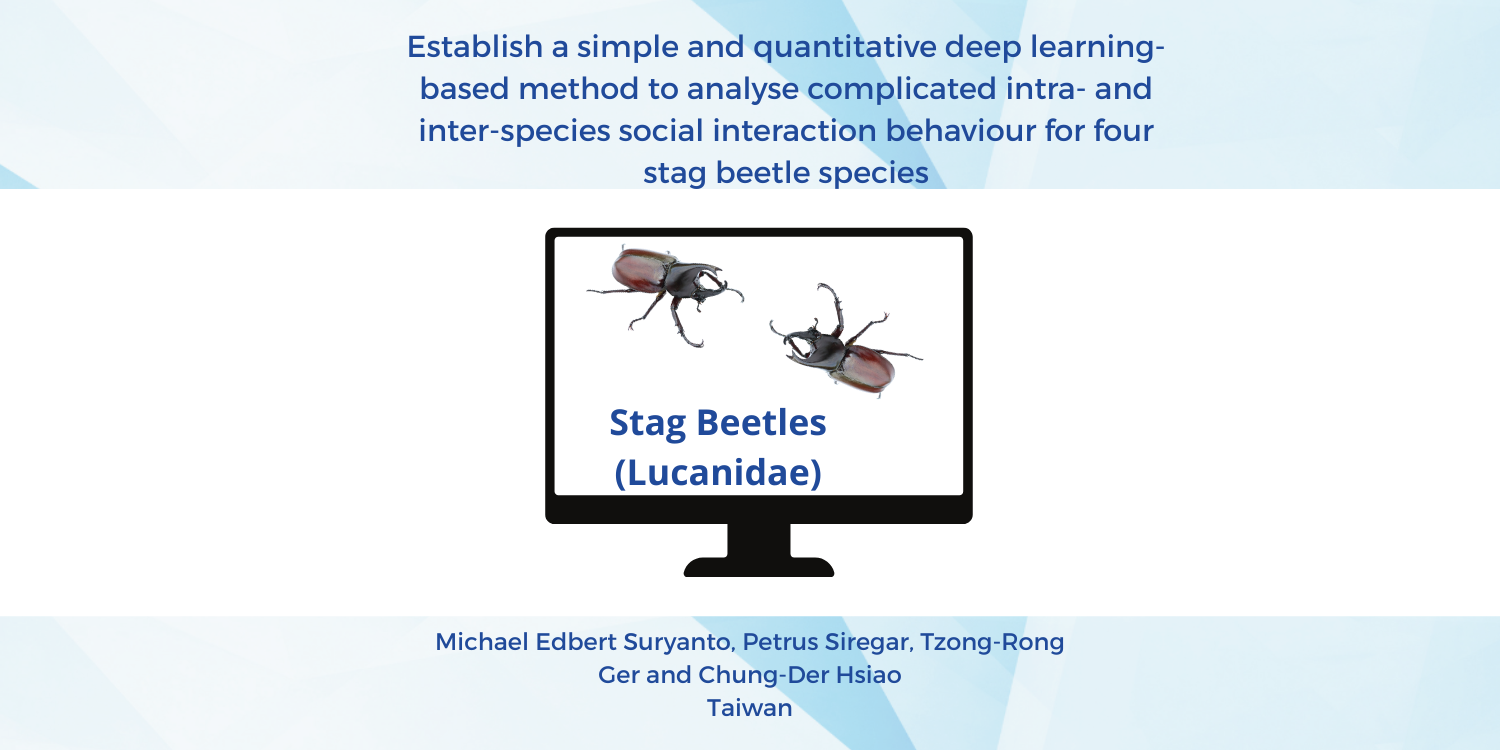Animal behavior analysis in ecotoxicology is a critical approach used to assess the impacts of contaminants on our environment. This field combines principles from ecology, toxicology, and ethology to understand how exposure to pollutants affects the behavior, physiology, and ultimately, the survival and reproduction of organisms.
Using behavior analysis to assess the impact of chemicals on aquatic species in ecotoxicology is highly valuable for several reasons.
Key points that highlight the importance and benefits of behavioral analysis in ecotox :
1. Sensitivity and Early Warning
Behavioral changes often occur at lower concentrations of pollutants than those required to cause mortality or visible physiological damage. This makes behavioral endpoints useful as early warning indicators of chemical exposure and potential toxicity.
2. Ecological Relevance
Behavioral responses are directly linked to an organism's ability to survive and reproduce in its environment. Changes in behavior can affect feeding, predator avoidance, reproduction, and social interactions, all of which have significant ecological implications.
3. Sublethal Effects
Many chemicals affect organisms at sublethal concentrations, meaning the organisms do not die but may experience impaired functioning. Behavioral analysis can detect these sublethal effects, which are often overlooked by traditional toxicity tests that focus on mortality.
4. Complexity and Realism
Behavioral tests can simulate more realistic and complex environmental scenarios compared to simple laboratory assays. This complexity can provide a more accurate picture of how chemicals affect organisms in their natural habitats.
5. Cost-Effective and Time-Efficient
Behavioral tests can be less resource-intensive and time-consuming than other methods, such as long-term field studies or detailed physiological analyses. This makes them a practical choice for screening a large number of chemicals.
6. Integration with Other Endpoints
Behavioral data can be integrated with other endpoints, such as physiological, biochemical, and genetic markers, to provide a more comprehensive understanding of the effects of chemicals on aquatic species.
7. Species-Specific Responses
Different species may exhibit unique behavioral responses to chemical exposure. By studying these species-specific responses, researchers can better understand the differential impacts of pollutants on biodiversity.
Applications of behavior analysis in ecotoxicology :
-
Risk Assessment: Understanding behavioral changes helps in assessing the risk that pollutants pose to ecosystems and informing regulatory decisions.
-
Ecological Impact Studies: Behavioral data can be used to evaluate the broader ecological impacts of pollution, including changes in population dynamics and community structure.
-
Conservation Efforts: Identifying behavioral changes can help prioritize areas for conservation and restoration efforts.
-
Toxicant Identification: Behavioral analyses can help identify the specific pollutants responsible for observed effects, aiding in the cleanup and management of contaminated sites.
Examples of Behavioral Assays in Aquatic Ecotoxicology
-
Locomotor Activity: Measuring swimming patterns and speed in response to chemical exposure.
-
Feeding Behavior: Observing changes in feeding rates or preferences after exposure to pollutants.
-
Avoidance Behavior: Assessing the tendency of organisms to avoid contaminated areas.
-
Reproductive Behavior: Monitoring mating behaviors, spawning success, and parental care.
-
Sensory Responses: Evaluating how pollutants affect sensory systems, such as vision or olfaction.
-
Learning and Memory
-
Social Interactions
Methods and Techniques
-
Behavioral Assays: Specific tests are designed to measure particular behaviors, such as the open-field test for locomotor activity, the T-maze for spatial memory, or the social interaction test for social behavior.
-
Video Analysis: High-resolution cameras and software tools are used to record and analyze animal behavior in detail
Application in ecotoxocological studies :
-
Toxicant Exposure Experiments: Researchers can expose aquatic or terrestrial animals to various concentrations of chemicals and monitor their behavioral responses over time. This helps in identifying sublethal effects and establishing dose-response relationships.
-
Field Simulations: Customizable arenas can be used to simulate natural habitats or specific environmental conditions, allowing for more ecologically relevant behavioral studies.
-
Long-Term Monitoring: conduct long-term monitoring of animal behavior, enabling researchers to observe the cumulative effects of chronic exposure to pollutants.
-
Comparative Studies: compare the effects of different chemicals or mixtures on the same species, as well as interspecific differences in behavioral responses.
-
Behavioral Endpoint Validation: ZebraLab can help validate behavioral endpoints as sensitive biomarkers of chemical exposure, contributing to the development of more effective toxicity tests.
ZebraLab for Fish embryos, larvae or adult behavior analysis
ZebraLab is a sophisticated system designed for automated tracking and analysis of aquatic species behavior (zebrafish, killifish, medaka ...) It is widely used in various fields, including ecotoxicology, to study the effects of environmental contaminants on animal behavior. Here's how ZebraLab can be effectively utilized in ecotoxicological studies:
-
Automated Tracking: ZebraLab uses high-resolution cameras and advanced software to automatically track the movement and behavior of animals in real-time. This reduces observer bias and increases the accuracy and reliability of data collection.
-
Behavioral Analysis: The system can analyze a wide range of behaviors, including locomotor activity, social interactions, feeding, and avoidance behaviors. It provides detailed metrics such as distance traveled, velocity, and time spent in specific areas.
-
Customizable Environments: Users can design and customize arenas or test chambers to simulate various environmental conditions and expose animals to different treatments or stressors.
-
Data Integration: ZebraLab can integrate data from other sensors and devices, such as temperature control or vibration, to provide a more comprehensive analysis of the experimental conditions.
-
User-Friendly Software: The software interface is designed to be intuitive, allowing researchers to easily set up experiments, monitor progress, and analyze data.
Advantages of Using ZebraLab
-
High-Throughput Data Collection: Automated tracking allows for the collection of large amounts of data with minimal manual effort, increasing the efficiency of experiments.
-
Reproducibility: Standardized protocols and automated data collection enhance the reproducibility of experiments, a critical factor in scientific research.
-
Enhanced Data Quality: Automated tracking reduces human error and bias, leading to more accurate and reliable data.
ZebraLab is a powerful tool for ecotoxicological studies, offering automated tracking and detailed behavioral analysis. Its applications range from toxicant exposure experiments to field simulations and long-term monitoring. By leveraging ZebraLab's capabilities, researchers can gain valuable insights into the effects of environmental contaminants on animal behavior, contributing to a better understanding of ecological risks and informing regulatory decisions.
Some related studies using ZebraLab :
2024 Caspase-8 promotes NLRP3 inflammasome activation mediates eye development defects in zebrafish larvae exposed to perfulorooctane sulfonate (PFOS)
2024 Larval Zebrafish Startle Response Is Highly Sensitive to Crude Oil Exposure
2024 - Effects of salinity on behavior and reproductive toxicity of BPA in adult marine medaka
2024 - Impact of chronic fluoxetine exposure on zebrafish: From fatty acid profile to behavior
2024 - Toxicity evaluation of neonicotinoids to earthworm (Eisenia fetida) behaviors by a novel locomotion tracking assay
2023 - Evaluation of Cyclophosphamide on the Behavior and Reproduction of Daphnia magna
2023 - The impact of ocean acidification on the eye, cuttlebone and behaviors of juvenile cuttlefish (Sepiella inermis)
See more https://www.viewpoint.fr/publications/zebrafish
ToxmateLab for macro-invertebrates, daphnia, drosophila, bees etc … behavior monitoring
ToxmateLab is a powerful tool for long-term experiments in ecotoxicology, offering advanced data management, statistical analysis, and reporting capabilities. By leveraging its features, researchers can efficiently manage and analyze complex datasets, identify long-term trends and patterns.
Long-term exposure to chemicals can result in complex dose-response relationships. ToxmateLab’s dose-response modeling tools can help you:
-
Estimate Low-Dose Effects: Identify the effects of low concentrations of chemicals over extended periods.
-
Model Cumulative Effects: Assess the cumulative impact of repeated or continuous exposure to chemicals.
-
Predict Long-Term Outcomes: Use modeling to predict the long-term effects of chemical exposure on organisms and ecosystems.
Related Publications using ToxmateLab
2024 - One like all? Behavioral response range of native and invasive amphipods to neonicotinoid exposure
2023 - Avoidance behaviour of aquatic macroinvertebrates for real-time detection of micropollutant surge in wastewater effluents
2023 - A novel approach for the assessment of invertebrate behavior and its use in behavioral ecotoxicology
Conclusion
Behavioral analysis is a powerful tool in ecotoxicology for assessing the impacts of chemicals on aquatic, airborne or terrestrial species. It provides sensitive, ecologically relevant, and practical insights into the effects of pollutants, helping to inform risk assessments, regulatory decisions, and conservation efforts. By incorporating behavioral endpoints, researchers can gain a more comprehensive understanding of the complex ways in which chemicals affect aquatic ecosystems.





